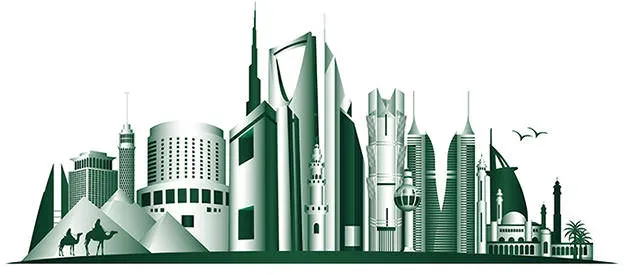 From Turkey south to North Africa and as far east as Afghanistan, the Middle East is a region rich in history and fascinating craft. At the intersection of the Mediterranean Sea, the Indian Ocean, Africa and Eurasia, the Middle East is a place where all cultures come together, where Judaism, Islam, Christianity and many other religions were born and where they continue to find themselves face to face. The evolution and interaction of these various ways of life has created dynamic political life for the region forever, and all of the various belief systems have translated into fascinating trends in fashion and cultural production. The jewelry of the Middle East reflects this vast diversity and dynamism and continues to be an inspirational source of design and technique for the whole world.
From Turkey south to North Africa and as far east as Afghanistan, the Middle East is a region rich in history and fascinating craft. At the intersection of the Mediterranean Sea, the Indian Ocean, Africa and Eurasia, the Middle East is a place where all cultures come together, where Judaism, Islam, Christianity and many other religions were born and where they continue to find themselves face to face. The evolution and interaction of these various ways of life has created dynamic political life for the region forever, and all of the various belief systems have translated into fascinating trends in fashion and cultural production. The jewelry of the Middle East reflects this vast diversity and dynamism and continues to be an inspirational source of design and technique for the whole world.
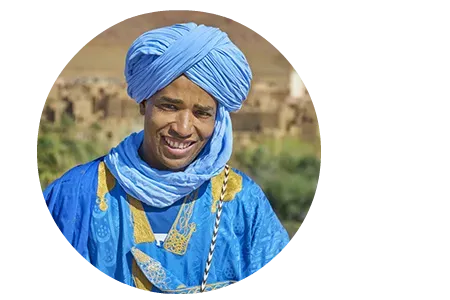 The Afro-Asiatic Berber people have occupied North Africa for as long as recorded history exists for the region. Their culture was altered by the many groups of people that moved through the area. Phoenicians, Greeks, Romans, Vandals, Byzantines, Arabs, Ottomans, French and Spanish people all settled or invaded North Africa at one point or another, and neighboring African populations also influenced the Berber culture. There are areas, however, in Morocco and Algeria where even during major occupations remained largely untouched, probably because they were not nearest ports and areas of political interest. In those places, the Berber culture still remains to some extent unaltered by outside influence.
The Afro-Asiatic Berber people have occupied North Africa for as long as recorded history exists for the region. Their culture was altered by the many groups of people that moved through the area. Phoenicians, Greeks, Romans, Vandals, Byzantines, Arabs, Ottomans, French and Spanish people all settled or invaded North Africa at one point or another, and neighboring African populations also influenced the Berber culture. There are areas, however, in Morocco and Algeria where even during major occupations remained largely untouched, probably because they were not nearest ports and areas of political interest. In those places, the Berber culture still remains to some extent unaltered by outside influence.
 Traditionally farmers in the mountains or oases close to various Mediterranean coasts, pre-Islamic Berber cultures were active in the creation of beautiful jewelry. Their work in jewelry was (and is still) often geometric, quite large in size and symmetrical. Symbols common to Berber jewelry and Berber henna tattooing initially included rural references, such as representations of the sun, moon, earth, and stars as well as fish, snakes, and various other shapes, most of which are thought to have been invested with healing or spiritual significance. As other cultures began to influence their own, the types of adornment and the materials used did not change so much as the types of symbols. Jewelry is important to female Berbers because it is a way of saving their money; their collection is their own to wear on their body, to sell, or to do with as they please.
Traditionally farmers in the mountains or oases close to various Mediterranean coasts, pre-Islamic Berber cultures were active in the creation of beautiful jewelry. Their work in jewelry was (and is still) often geometric, quite large in size and symmetrical. Symbols common to Berber jewelry and Berber henna tattooing initially included rural references, such as representations of the sun, moon, earth, and stars as well as fish, snakes, and various other shapes, most of which are thought to have been invested with healing or spiritual significance. As other cultures began to influence their own, the types of adornment and the materials used did not change so much as the types of symbols. Jewelry is important to female Berbers because it is a way of saving their money; their collection is their own to wear on their body, to sell, or to do with as they please.
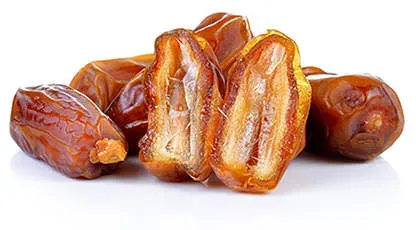 This is also true of Bedouin tribes of the Sinai, the Negev and Arabia, who descend for the most part from two groups of people: the Yamanis, descended from Yoktan of the Bible, and the Qaysis, descended from the Biblical Ishmael. The Yamanis lived in Southwestern Arabia, where some farmed and irrigated the land. The Qaysis lived in central and north Arabia, where sedentary Bedouins grew dates and grains in the oases. The nomads among both Bedouin groups migrated with herds of sheep, goats and camels, trading with the people in these early urban centers. Because of their nomadic lifestyle, migrant Bedouin women carried their entire wealth on their bodies in the form of silver jewelry. This jewelry was hers and she could do with it as she wished; upon her death it was often melted down, as it would be inappropriate to give one woman's dowry to another to use. One would think that this practice would eliminate much history from Bedouin jewelrymaking, but in fact many of the craftsmen who melted the jewelry down and then remade it actually copied the patterns of the old pieces to make the new ones, and in this way, preserved tradition.
This is also true of Bedouin tribes of the Sinai, the Negev and Arabia, who descend for the most part from two groups of people: the Yamanis, descended from Yoktan of the Bible, and the Qaysis, descended from the Biblical Ishmael. The Yamanis lived in Southwestern Arabia, where some farmed and irrigated the land. The Qaysis lived in central and north Arabia, where sedentary Bedouins grew dates and grains in the oases. The nomads among both Bedouin groups migrated with herds of sheep, goats and camels, trading with the people in these early urban centers. Because of their nomadic lifestyle, migrant Bedouin women carried their entire wealth on their bodies in the form of silver jewelry. This jewelry was hers and she could do with it as she wished; upon her death it was often melted down, as it would be inappropriate to give one woman's dowry to another to use. One would think that this practice would eliminate much history from Bedouin jewelrymaking, but in fact many of the craftsmen who melted the jewelry down and then remade it actually copied the patterns of the old pieces to make the new ones, and in this way, preserved tradition.
 Some of the materials used for making this jewelry found itself in Bedouin hands because the relatively more sedentary settlements lay on the trade route connecting Africa and India with the Mediterranean. Those walking the trade route were the nomadic Bedouins, leading thousands of camels on caravan along the Silk Road. Residents had money because they were intermediaries and also culled materials in trade.
Some of the materials used for making this jewelry found itself in Bedouin hands because the relatively more sedentary settlements lay on the trade route connecting Africa and India with the Mediterranean. Those walking the trade route were the nomadic Bedouins, leading thousands of camels on caravan along the Silk Road. Residents had money because they were intermediaries and also culled materials in trade.
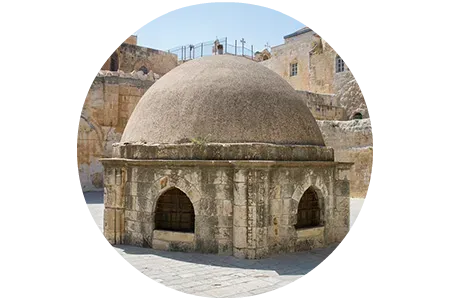 During the Bronze Age, the Near and Middle East was a place where specific deities tended to be tied to particular populations, and where the ruler of that population had a primary relationship with its gods. The ruler built temples to house the gods, and commissioned statues of bronze and other materials to represent the god. Each god was often represented in specific postures, so that for example El, the creator god of Canaan, can be identified as a seated man with his arms raised. Bronze Age Canaanites worked ivory very well, though the material was seldom used for jewelry and was more often carved for sculptures and inlays.
During the Bronze Age, the Near and Middle East was a place where specific deities tended to be tied to particular populations, and where the ruler of that population had a primary relationship with its gods. The ruler built temples to house the gods, and commissioned statues of bronze and other materials to represent the god. Each god was often represented in specific postures, so that for example El, the creator god of Canaan, can be identified as a seated man with his arms raised. Bronze Age Canaanites worked ivory very well, though the material was seldom used for jewelry and was more often carved for sculptures and inlays.
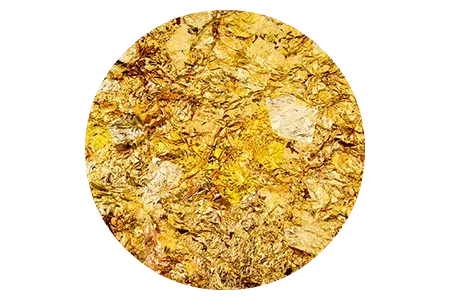 During the third millennium, Sumer and Akkad in Mesopotamia grew into city-states that were very politically active. Though warfare drained the sites' resources, jewelry production was at a height throughout the period. In Assyria in the south, men and women both wore a lot of jewelry, including amulets and cylinder seals. They used thin gold metal leaf to craft multi-strand necklaces and ankle bracelets, and all such jewelry was set with bright stones like
During the third millennium, Sumer and Akkad in Mesopotamia grew into city-states that were very politically active. Though warfare drained the sites' resources, jewelry production was at a height throughout the period. In Assyria in the south, men and women both wore a lot of jewelry, including amulets and cylinder seals. They used thin gold metal leaf to craft multi-strand necklaces and ankle bracelets, and all such jewelry was set with bright stones like ![]() agate,
agate, ![]() lapis lazuli and carnelian. Gems were also carved, sometimes to make it possible for people to have personal seals and sometimes just to include a pretty motif, such as leaves or spirals. This jewelry was worn by statues as well as people, because the gods needed to be decorated and honored. Egyptian jewelry has been found in tombs in Sumeria, and some of these pieces are the oldest jewelry ever found:
lapis lazuli and carnelian. Gems were also carved, sometimes to make it possible for people to have personal seals and sometimes just to include a pretty motif, such as leaves or spirals. This jewelry was worn by statues as well as people, because the gods needed to be decorated and honored. Egyptian jewelry has been found in tombs in Sumeria, and some of these pieces are the oldest jewelry ever found: ![]() turquoise and gold bracelets for a queen, a golden robe with gold pins for another queen, turquoise, carnelian and lapis lazuli, the favorite jewels of Egypt.
turquoise and gold bracelets for a queen, a golden robe with gold pins for another queen, turquoise, carnelian and lapis lazuli, the favorite jewels of Egypt.
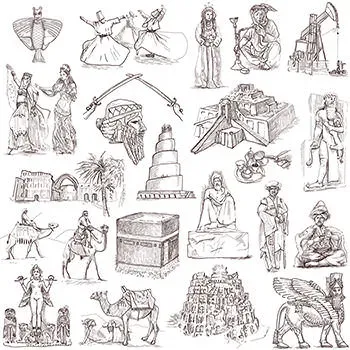 It was from Mesopotamia that Abraham emerged: around 2000 BCE, he received to go to Canaan, and through his faith in Yahweh the monotheistic religion of Judaism was born. Jewish tradition holds that from Abraham's son Jacob's twelve sons were descended twelve tribes of people, and these people occupied the Fertile Crescent: land including the Levant, Mesopotamia and Egypt. Egypt dominated the Palestinian region during the late Bronze Age ï¾– the latter half of the second millennium BCE ï¾– and various signs of imitative craft practice have been discovered on archaeological digs in the region: Egyptian influence shows up in many ways, including the motifs with which artisans decorated their objects.
It was from Mesopotamia that Abraham emerged: around 2000 BCE, he received to go to Canaan, and through his faith in Yahweh the monotheistic religion of Judaism was born. Jewish tradition holds that from Abraham's son Jacob's twelve sons were descended twelve tribes of people, and these people occupied the Fertile Crescent: land including the Levant, Mesopotamia and Egypt. Egypt dominated the Palestinian region during the late Bronze Age ï¾– the latter half of the second millennium BCE ï¾– and various signs of imitative craft practice have been discovered on archaeological digs in the region: Egyptian influence shows up in many ways, including the motifs with which artisans decorated their objects.
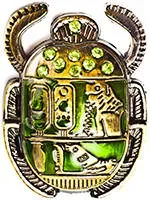 Canaan was part of a commercial route between Egypt, Cyprus and Greece, and portable products from these countries have been discovered all along this route. Scarabs, for example ï¾– a traditionally Egyptian motif ï¾– have been found in Deir el Balah, a city in ancient Palestine, along with gold jewelry and beads of precious stones. Egyptian paintings also depict visiting Asiatics, which is one of the ways we know about Middle Eastern jewelry today. Some of these images depict people wearing gold, silver or bronze foil sheets sewn into headdresses, worn as bands around the head or dangling as looped earrings. Earrings also show up in these paintings in styles such as cluster balls attached to loops, swelling lunate shaped earrings, and even occasionally fruit-shaped earrings.
Canaan was part of a commercial route between Egypt, Cyprus and Greece, and portable products from these countries have been discovered all along this route. Scarabs, for example ï¾– a traditionally Egyptian motif ï¾– have been found in Deir el Balah, a city in ancient Palestine, along with gold jewelry and beads of precious stones. Egyptian paintings also depict visiting Asiatics, which is one of the ways we know about Middle Eastern jewelry today. Some of these images depict people wearing gold, silver or bronze foil sheets sewn into headdresses, worn as bands around the head or dangling as looped earrings. Earrings also show up in these paintings in styles such as cluster balls attached to loops, swelling lunate shaped earrings, and even occasionally fruit-shaped earrings.
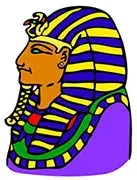 From the period contemporary with the Egyptian New Kingdom all the way through the end of the thirteenth century BCE, the Egyptians controlled vital trade routes and some settlements. The twelve tribes of Israel were enslaved under one of these pharaohs, and it was this enslavement that brought on the emigration of the Jews of Egypt back to the Canaan of Abraham.
From the period contemporary with the Egyptian New Kingdom all the way through the end of the thirteenth century BCE, the Egyptians controlled vital trade routes and some settlements. The twelve tribes of Israel were enslaved under one of these pharaohs, and it was this enslavement that brought on the emigration of the Jews of Egypt back to the Canaan of Abraham.
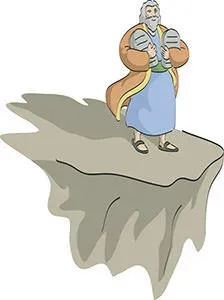 Moses went up Mount Sinai for forty days and nights, receiving the Ten Commandments. While he was on the mountain, many people below who had left Egypt with him thought he had died and some melted down their gold to make the golden calf. Jewish women are reputed to have refused to give their gold jewelry to the men to make this calf, a story for which some communities still honor their women today. Another important event in jewelry history at this time was that Moses received the right way to make Aaron ï¾– the first high priest of Judaism ï¾– a bejeweled breastplate "of judgment"" to wear as a memorial before God. The breastplate was to be woven as two pieces of gold, blue, purple and scarlet linen threads, put together to form a kind of purse in which was kept two sacred stones through which the priest could attempt to communicate with God about any issue concerning the children of Israel. On the exterior of the plate were set four rows of precious stones, each of which was engraved with the name of one of the twelve tribes. The journey to Canaan cohered the group of tribes into the Israelites, and when they got to Canaan in about 1125 BCE, they decisively defeated the local population."
Moses went up Mount Sinai for forty days and nights, receiving the Ten Commandments. While he was on the mountain, many people below who had left Egypt with him thought he had died and some melted down their gold to make the golden calf. Jewish women are reputed to have refused to give their gold jewelry to the men to make this calf, a story for which some communities still honor their women today. Another important event in jewelry history at this time was that Moses received the right way to make Aaron ï¾– the first high priest of Judaism ï¾– a bejeweled breastplate "of judgment"" to wear as a memorial before God. The breastplate was to be woven as two pieces of gold, blue, purple and scarlet linen threads, put together to form a kind of purse in which was kept two sacred stones through which the priest could attempt to communicate with God about any issue concerning the children of Israel. On the exterior of the plate were set four rows of precious stones, each of which was engraved with the name of one of the twelve tribes. The journey to Canaan cohered the group of tribes into the Israelites, and when they got to Canaan in about 1125 BCE, they decisively defeated the local population."
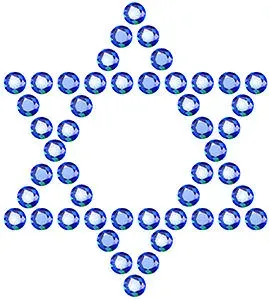 The Bronze Age came to a close in the twelfth century BCE, and the metal was generally transitioned out of widespread use, in favor of iron. Egyptian political rule began to dissipate throughout the Middle East as the Bronze Age came to a close. Beginning in the tenth century BCE, the temple of Solomon in Jerusalem became the central locus of Yahweh's worship. Canaan was ruled by a series of Jewish Judges and then an Israelite monarchy of which some of the more famous kings were David and Solomon. David conquered the Canaanite Jerusalem. The excavation of Jewish graves uninfluenced by foreign forces tends to reveal a lack of ornamentation; especially averse to the ancestor-worship of many of their religious contemporaries, Jewish burial practices were simple and unassuming and though it was important where and when a person was buried, it was not customary to bury the average person with costly worldly goods. The aversion to idolatry in general has influenced the creation of Jewish jewelry throughout time: in the second of the Ten Commandments as well as in other instances in the Old Testament, representing "anything in the heaven above, on the earth below, or in the water below the land"" is forbidden. The prohibition applies mostly to sculpture, but relief carvings of people or animals tread a thin line between three and two-dimensional representation and are therefore to be avoided. In general, Jewish jewelry has developed along more abstract and symbolic lines than representational in terms of possible carvings or sculptural form."
The Bronze Age came to a close in the twelfth century BCE, and the metal was generally transitioned out of widespread use, in favor of iron. Egyptian political rule began to dissipate throughout the Middle East as the Bronze Age came to a close. Beginning in the tenth century BCE, the temple of Solomon in Jerusalem became the central locus of Yahweh's worship. Canaan was ruled by a series of Jewish Judges and then an Israelite monarchy of which some of the more famous kings were David and Solomon. David conquered the Canaanite Jerusalem. The excavation of Jewish graves uninfluenced by foreign forces tends to reveal a lack of ornamentation; especially averse to the ancestor-worship of many of their religious contemporaries, Jewish burial practices were simple and unassuming and though it was important where and when a person was buried, it was not customary to bury the average person with costly worldly goods. The aversion to idolatry in general has influenced the creation of Jewish jewelry throughout time: in the second of the Ten Commandments as well as in other instances in the Old Testament, representing "anything in the heaven above, on the earth below, or in the water below the land"" is forbidden. The prohibition applies mostly to sculpture, but relief carvings of people or animals tread a thin line between three and two-dimensional representation and are therefore to be avoided. In general, Jewish jewelry has developed along more abstract and symbolic lines than representational in terms of possible carvings or sculptural form."
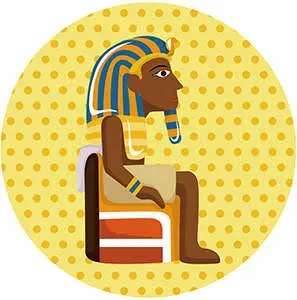 Egyptian pharaohs, on the other hand, used so much gold in their decorative commissions that they sometimes needed to mine gold from outside of the region of the Upper Nile, and would use mines in Yemen and southern Africa as well as taking tribute from their subjects. There was some trade for metals, though, and artisans in Mesopotamia and Palestine obtained their supplies from Egypt and Arabia. During the reign of King Solomon - the mid to late tenth century, BCE ï¾– gold, silver and copper were mined in the present Kingdom of Saudi Arabia. Egyptian jewelrymakers did not use precious stones; the stones utilized in Egyptian jewelrymaking might now be considered semi-precious, such as malachite,
Egyptian pharaohs, on the other hand, used so much gold in their decorative commissions that they sometimes needed to mine gold from outside of the region of the Upper Nile, and would use mines in Yemen and southern Africa as well as taking tribute from their subjects. There was some trade for metals, though, and artisans in Mesopotamia and Palestine obtained their supplies from Egypt and Arabia. During the reign of King Solomon - the mid to late tenth century, BCE ï¾– gold, silver and copper were mined in the present Kingdom of Saudi Arabia. Egyptian jewelrymakers did not use precious stones; the stones utilized in Egyptian jewelrymaking might now be considered semi-precious, such as malachite, ![]() jasper and
jasper and ![]() turquoise, but to the ancient Egyptian these stones held spiritual as well as aesthetic significance and were therefore quite valuable.
turquoise, but to the ancient Egyptian these stones held spiritual as well as aesthetic significance and were therefore quite valuable.
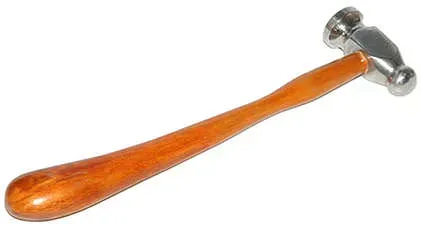 People in ancient Israel and Canaan worked with metals for weaponry, religious needs, and to make jewelry, which was an important part of trade. Gold, silver, copper, bronze, iron and lead were all used to make jewelry. Techniques in use at the time were simple: cold hammering, heated metal hammering, and open mold casting were common, whereas filigree and other more decorative techniques were quite rare. This is not to say that the jewelry was rough: indeed it was often smoothly finished and set with precious and semi-precious stones. Pendants and beads were sometimes made of glass, while rings were carved with images and written inscriptions, at times with spiritual significance.
People in ancient Israel and Canaan worked with metals for weaponry, religious needs, and to make jewelry, which was an important part of trade. Gold, silver, copper, bronze, iron and lead were all used to make jewelry. Techniques in use at the time were simple: cold hammering, heated metal hammering, and open mold casting were common, whereas filigree and other more decorative techniques were quite rare. This is not to say that the jewelry was rough: indeed it was often smoothly finished and set with precious and semi-precious stones. Pendants and beads were sometimes made of glass, while rings were carved with images and written inscriptions, at times with spiritual significance.
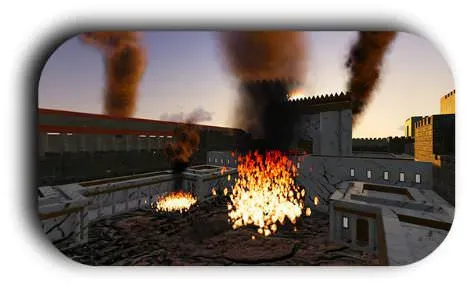 The Jewish temple of Solomon, with its two bronze ceremonial pillars, interior spaces full of altars and gold objects (such as an urn full of manna), was destroyed in 586 BCE by Nebuchadnezzar, the king of Babylon, and much of Jerusalem's population was deported to Babylon. Thus, with the destruction of the First Temple, Jewish identity became tied to exile, and the cultural products of those affiliated with the religion began to change. Always there have been exquisite ritual objects used in Jewish tradition, but personal ornamentation has changed depending on where the people lived: often throughout Jewish history it has proven important that personal wealth be portable in the form of small valuables. Though the Jews were released from Babylonian captivity between 539 and 525, upon returning to their homeland, they discovered that it was part of the Persian Achaemenid Empire, a culture with a distinctive aesthetic of its own and the largest empire the ancient world had yet seen.
The Jewish temple of Solomon, with its two bronze ceremonial pillars, interior spaces full of altars and gold objects (such as an urn full of manna), was destroyed in 586 BCE by Nebuchadnezzar, the king of Babylon, and much of Jerusalem's population was deported to Babylon. Thus, with the destruction of the First Temple, Jewish identity became tied to exile, and the cultural products of those affiliated with the religion began to change. Always there have been exquisite ritual objects used in Jewish tradition, but personal ornamentation has changed depending on where the people lived: often throughout Jewish history it has proven important that personal wealth be portable in the form of small valuables. Though the Jews were released from Babylonian captivity between 539 and 525, upon returning to their homeland, they discovered that it was part of the Persian Achaemenid Empire, a culture with a distinctive aesthetic of its own and the largest empire the ancient world had yet seen.
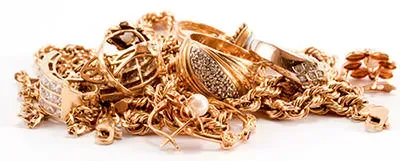 Alexander the Great conquered the Persian Empire in 331 BCE, seizing the rich treasures of Babylon, and at that moment, huge amounts of gold passed into public hands. Demand for gold jewelry exploded. Greek styles spread across the known world and Greek artisans were also immersed in cultural trends foreign to their training. Earrings, necklaces, pendants, pins, bracelets, armbands, thigh bands, finger rings, wreaths, diadems and hair ornaments were all produced during this period. Bracelets were worn in pairs ï¾– a Persian fashion ï¾– and other types of jewelry were worn in matched sets. Pearls and other colored gems and enamels were inlaid into bright yellow gold and motifs like the Heracles knot were at times carved into the surface of things or molded into the sculptural design.
Alexander the Great conquered the Persian Empire in 331 BCE, seizing the rich treasures of Babylon, and at that moment, huge amounts of gold passed into public hands. Demand for gold jewelry exploded. Greek styles spread across the known world and Greek artisans were also immersed in cultural trends foreign to their training. Earrings, necklaces, pendants, pins, bracelets, armbands, thigh bands, finger rings, wreaths, diadems and hair ornaments were all produced during this period. Bracelets were worn in pairs ï¾– a Persian fashion ï¾– and other types of jewelry were worn in matched sets. Pearls and other colored gems and enamels were inlaid into bright yellow gold and motifs like the Heracles knot were at times carved into the surface of things or molded into the sculptural design.
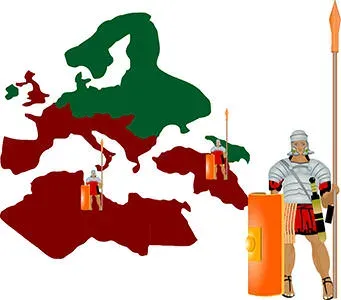 Between 305 and 65 BCE, the eastern Mediterranean was a battleground between Egypt and the Seleucid dynasty ruling Syria, Mesopotamia and Iran. In 64 BCE, Pompey, the Roman general, deposed the last Seleucid king and incorporated Syria into the powerful Roman state. In 27 BCE, Julius Caesar was awarded the title of Augustus and the Roman empire began ï¾– a territory that by 1 AD incorporated all the land bordering the Mediterranean and Black Seas, including the Near Eastern areas of Judea, Syria and Armenia. Armenia became the first nation to adopt Christianity as its official religion in 301 and as it developed its alphabet in the early fifth century AD, its arts began to flourish, heavily influenced by the Orthodox Christian tradition with which it was aligned. After the destruction of the Second Temple in 70 AD, Jews began to spread over the Roman Empire.
Between 305 and 65 BCE, the eastern Mediterranean was a battleground between Egypt and the Seleucid dynasty ruling Syria, Mesopotamia and Iran. In 64 BCE, Pompey, the Roman general, deposed the last Seleucid king and incorporated Syria into the powerful Roman state. In 27 BCE, Julius Caesar was awarded the title of Augustus and the Roman empire began ï¾– a territory that by 1 AD incorporated all the land bordering the Mediterranean and Black Seas, including the Near Eastern areas of Judea, Syria and Armenia. Armenia became the first nation to adopt Christianity as its official religion in 301 and as it developed its alphabet in the early fifth century AD, its arts began to flourish, heavily influenced by the Orthodox Christian tradition with which it was aligned. After the destruction of the Second Temple in 70 AD, Jews began to spread over the Roman Empire.
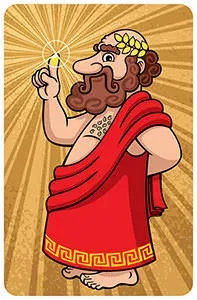 Meanwhile, in western-central Anatolia (modern Turkey), the state of Phrygia had been developing since Balkans migrated there in 1200 BCE. The period from the early eighth century BCE to around 700 BCE saw Phrygia flourishing, and the objects that have been excavated from this area are lavishly decorated. The most famous of the Phrygian kings was Midas, whose reputation now as the man with the golden touch obviously derives from the wealth of his kingdom. Bronze and brass pins and belts and countless other ornaments were inscribed with images of royal rituals, hunts, battles and genre scenes.
Meanwhile, in western-central Anatolia (modern Turkey), the state of Phrygia had been developing since Balkans migrated there in 1200 BCE. The period from the early eighth century BCE to around 700 BCE saw Phrygia flourishing, and the objects that have been excavated from this area are lavishly decorated. The most famous of the Phrygian kings was Midas, whose reputation now as the man with the golden touch obviously derives from the wealth of his kingdom. Bronze and brass pins and belts and countless other ornaments were inscribed with images of royal rituals, hunts, battles and genre scenes.
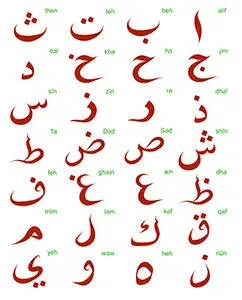 In the Middle East, most Bedouin tribes before the first centuries AD were polytheistic, but some began to convert to Christianity and Judaism in those early years AD. The Bedouins were becoming a real military power, allied with central Arabian cities, and classical Arabic became the language of the land. Bedouins conquered Mecca in 500 AD, and this city was the center of pre-Islamic Arabic religious life.
In the Middle East, most Bedouin tribes before the first centuries AD were polytheistic, but some began to convert to Christianity and Judaism in those early years AD. The Bedouins were becoming a real military power, allied with central Arabian cities, and classical Arabic became the language of the land. Bedouins conquered Mecca in 500 AD, and this city was the center of pre-Islamic Arabic religious life.
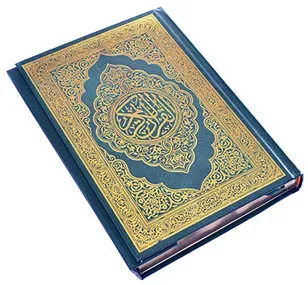 Islam developed there in the 7th century AD: Muhammad wrote the Qur'an and practiced his faith through his way of life. His everyday practices set an example that became known as hadith ï¾– traditions preserved in the Sunnah. Of these hadith, quite a few deal with the way that men and women dress and generally encourage modesty. Men, for example, are not to wear gold jewelry to show off their wealth. Women, on the other hand, are encouraged to wear jewelry for the purposes of beautification.
Islam developed there in the 7th century AD: Muhammad wrote the Qur'an and practiced his faith through his way of life. His everyday practices set an example that became known as hadith ï¾– traditions preserved in the Sunnah. Of these hadith, quite a few deal with the way that men and women dress and generally encourage modesty. Men, for example, are not to wear gold jewelry to show off their wealth. Women, on the other hand, are encouraged to wear jewelry for the purposes of beautification.
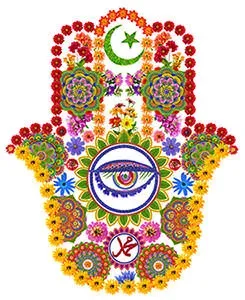 The wearing of jewelry was a very popular decorative act for women in the region long before Islam became an influential way of life and it is from the Berbers, Bedouins and other native people of the Middle East that such trends derive. Ornaments for the ear, neck, waist, ankle, hand and nose were all already quite common and indicated the well-being of a family as well as enhancing the beauty of the woman. Interestingly, many motifs that were incorporated into Islamic ornamentation, such as the Hand of Fatima, were symbols that had long been used in the region. Jewish tradition, for example, also incorporates the symbol of the five-fingered hand with the eye in the center of the palm, but refers to it as the Hamesh Hand. The symbol predates both religions, however, and seems to have been spiritually significant to tribes in the region before Judaism and then Islam arrived on the cultural scene.
The wearing of jewelry was a very popular decorative act for women in the region long before Islam became an influential way of life and it is from the Berbers, Bedouins and other native people of the Middle East that such trends derive. Ornaments for the ear, neck, waist, ankle, hand and nose were all already quite common and indicated the well-being of a family as well as enhancing the beauty of the woman. Interestingly, many motifs that were incorporated into Islamic ornamentation, such as the Hand of Fatima, were symbols that had long been used in the region. Jewish tradition, for example, also incorporates the symbol of the five-fingered hand with the eye in the center of the palm, but refers to it as the Hamesh Hand. The symbol predates both religions, however, and seems to have been spiritually significant to tribes in the region before Judaism and then Islam arrived on the cultural scene.
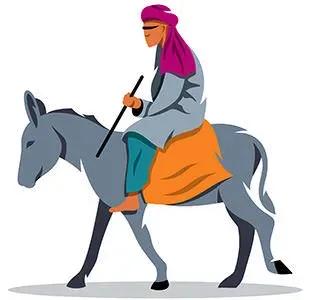 After Mohammed's death, caliphs succeeded him in directing the growth of the religion and the Bedouin acted at times as warriors on their behalf. Bedouin culture ï¾– despite its decline in military importance over the ensuing centuries ï¾– infiltrated local customs in many areas conquered by the caliphate, and Arabic became the main Middle Eastern language. By the 12th century AD, Bedouins were spreading their culture throughout North Africa as well, because they were moving there, depopulating the Arabian Peninsula. As cities on the Arabian Peninsula grew and flourished, Bedouin culture became something that was looked down upon, despite the fact that the Bedouin lifestyle remained a model Muslim lifestyle and despite the fact that Bedouin styles remained popular, especially in silversmithing.
After Mohammed's death, caliphs succeeded him in directing the growth of the religion and the Bedouin acted at times as warriors on their behalf. Bedouin culture ï¾– despite its decline in military importance over the ensuing centuries ï¾– infiltrated local customs in many areas conquered by the caliphate, and Arabic became the main Middle Eastern language. By the 12th century AD, Bedouins were spreading their culture throughout North Africa as well, because they were moving there, depopulating the Arabian Peninsula. As cities on the Arabian Peninsula grew and flourished, Bedouin culture became something that was looked down upon, despite the fact that the Bedouin lifestyle remained a model Muslim lifestyle and despite the fact that Bedouin styles remained popular, especially in silversmithing.
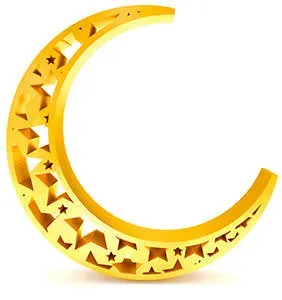 Filigree and granulation work from the Fatimid period in Egypt and Greater Syria (909 ï¾– 1171) was absolutely exquisite. Goldsmithing reached heights of intricacy. One of the most popular shapes at the time was the hilal, or crescent moon, and accompanying this shape were arabesque designs, openwork S curves, attached rings for stringing gems. Like Judaism, Islam forbids the artistic depiction of animals and people, so Islamic jewelry did not develop along representational lines. Instead, its strength is in the abstract relationship between geometric forms, and the sensual patterns that are created thereof. Fatimid pieces were worked from wire and sheets of yellow gold and were so beautiful as to influence jewelers from the Mamluks to the southern Spanish to the Mughal Indians and North Africans. Cairo was the center of cultural production during this opulent Fatimid period.
Filigree and granulation work from the Fatimid period in Egypt and Greater Syria (909 ï¾– 1171) was absolutely exquisite. Goldsmithing reached heights of intricacy. One of the most popular shapes at the time was the hilal, or crescent moon, and accompanying this shape were arabesque designs, openwork S curves, attached rings for stringing gems. Like Judaism, Islam forbids the artistic depiction of animals and people, so Islamic jewelry did not develop along representational lines. Instead, its strength is in the abstract relationship between geometric forms, and the sensual patterns that are created thereof. Fatimid pieces were worked from wire and sheets of yellow gold and were so beautiful as to influence jewelers from the Mamluks to the southern Spanish to the Mughal Indians and North Africans. Cairo was the center of cultural production during this opulent Fatimid period.
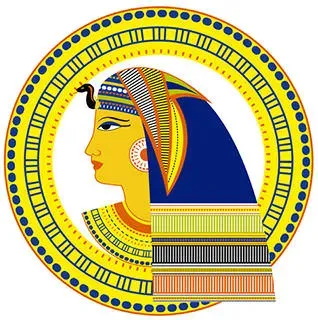 The Mamluks, powerful Islamic rulers whose capital was Cairo, inherited the role of middleman in the trade routes between Southeast Asia and Europe through the Red Sea. Baghdad fell to the Mongols in the thirteenth century; the warlord Hulagu, grandson of Genghis Khan, mocked the city's leaders for not having used the riches unearthed in the Iraqi treasure trove to strengthen the site's fortifications. The Mamluks halted the advance of the Mongols west of Iraq, though, and expelled the Crusaders from the Holy Land in the thirteenth century. Their metalwork was intricate, inlaid with silver and gold, but as the Mamluk rule weakened in the late fourteenth century, the export market to Europe became more and more important and jewelry styles developed with respect to European tastes. There were even Latin inscriptions in decorative work along with Arabic phrases.
The Mamluks, powerful Islamic rulers whose capital was Cairo, inherited the role of middleman in the trade routes between Southeast Asia and Europe through the Red Sea. Baghdad fell to the Mongols in the thirteenth century; the warlord Hulagu, grandson of Genghis Khan, mocked the city's leaders for not having used the riches unearthed in the Iraqi treasure trove to strengthen the site's fortifications. The Mamluks halted the advance of the Mongols west of Iraq, though, and expelled the Crusaders from the Holy Land in the thirteenth century. Their metalwork was intricate, inlaid with silver and gold, but as the Mamluk rule weakened in the late fourteenth century, the export market to Europe became more and more important and jewelry styles developed with respect to European tastes. There were even Latin inscriptions in decorative work along with Arabic phrases.
 Ottoman Turks ruled Anatolia, the Middle East, bits of North Africa and southeast Europe variously between 1281 and 1924. Venice was absolutely dependent upon the Ottomans and trade between the two sites was key. During the incredibly long reign of the Ottomans, of course jewelry went through many generations of change. Their aesthetic was initially influenced by their absorption of former Byzantine territories, especially of Constantinople in 1453, but like other Islamic art traditions, it is characterized by abstract patterning, this time with a bit of an Asian flair. A mirror, for example, from Turkey is rendered in a rich brown iron, inlaid with sweet yellow gold flower-like designs that interlace and interact to become a delicate swarm on the back of the piece. The handle is of ivory and no detail is unfinished. Similar precious work continued until the economy of the empire began to weaken in the late 1600s. Gold and silver from the New World began to arrive on the scene, causing inflation. The treasury sunk and whereas there had once, during the reign of Suleiman the Magnificent, been 120 artists employed in the royal court, there were now ten. It became more profitable for artists to make jewelry for mass market than for the courts. Still, the empire wasn't at all over, and new trends, including the beautiful Tulip Period under Ahmed III, continued to emerge for centuries.
Ottoman Turks ruled Anatolia, the Middle East, bits of North Africa and southeast Europe variously between 1281 and 1924. Venice was absolutely dependent upon the Ottomans and trade between the two sites was key. During the incredibly long reign of the Ottomans, of course jewelry went through many generations of change. Their aesthetic was initially influenced by their absorption of former Byzantine territories, especially of Constantinople in 1453, but like other Islamic art traditions, it is characterized by abstract patterning, this time with a bit of an Asian flair. A mirror, for example, from Turkey is rendered in a rich brown iron, inlaid with sweet yellow gold flower-like designs that interlace and interact to become a delicate swarm on the back of the piece. The handle is of ivory and no detail is unfinished. Similar precious work continued until the economy of the empire began to weaken in the late 1600s. Gold and silver from the New World began to arrive on the scene, causing inflation. The treasury sunk and whereas there had once, during the reign of Suleiman the Magnificent, been 120 artists employed in the royal court, there were now ten. It became more profitable for artists to make jewelry for mass market than for the courts. Still, the empire wasn't at all over, and new trends, including the beautiful Tulip Period under Ahmed III, continued to emerge for centuries.
 The Ottoman governor of the Arabian Peninsula was overthrown in the seventeenth century and control of the region went back to the Bedouin chiefs. The Ottomans were still in power in the Balkans, and their artwork was beginning to be transformed by the European Baroque. At the same time, Europeans have begun to move in on the Persian Gulf trade, and the al-Saud dynasty took over Saudi Arabia in the eighteenth century. Napoleon took Egypt for a few years at the end of the eighteenth century, tipping the balance of power in the Middle East and Anatolia towards Europe. Western-style decorative form infiltrated all parts of the region, so that even manuscript illustration in Turkey gave way for some time to easel painting. Of course there were still strong elements of Persian and Eastern tradition, but tastes were changing for new markets and thus continue to change.
The Ottoman governor of the Arabian Peninsula was overthrown in the seventeenth century and control of the region went back to the Bedouin chiefs. The Ottomans were still in power in the Balkans, and their artwork was beginning to be transformed by the European Baroque. At the same time, Europeans have begun to move in on the Persian Gulf trade, and the al-Saud dynasty took over Saudi Arabia in the eighteenth century. Napoleon took Egypt for a few years at the end of the eighteenth century, tipping the balance of power in the Middle East and Anatolia towards Europe. Western-style decorative form infiltrated all parts of the region, so that even manuscript illustration in Turkey gave way for some time to easel painting. Of course there were still strong elements of Persian and Eastern tradition, but tastes were changing for new markets and thus continue to change.
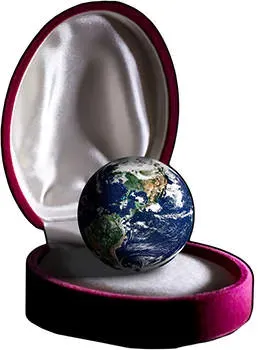 Wonderful traditions of craft do not disappear, and today, Turks, Israelis and Middle Easterners in general are among some of the world's leading metalworkers. The markets have changed and opened up globally, and tastes have accordingly broadened, but the quality of work produced in these regions or from emigrants from these regions is very high and quite sought after, even in the United States. Meanwhile, markets interior to the Middle East ï¾– such as that in Saudi Arabia, where gold is very popular ï¾– are at times quite strong and in some of the states that remain absolute monarchies there are remarkably beautiful crown jewels to be seen. These are not all designed by local jewelers, of course: New York's Harry Winston designed the favorite tiara of the Empress Farah of Iran. Constructed out of platinum, the tiara was set with diamonds in the shape of a heart on the lower band. The middle band included rows of yellow, pink and clear diamonds, and seven large emeralds framed by diamonds rested on the tiara's top. In the Middle East, it seems that traffic between nations and the exchange of cultural goods will always be a wonderful reality.
Wonderful traditions of craft do not disappear, and today, Turks, Israelis and Middle Easterners in general are among some of the world's leading metalworkers. The markets have changed and opened up globally, and tastes have accordingly broadened, but the quality of work produced in these regions or from emigrants from these regions is very high and quite sought after, even in the United States. Meanwhile, markets interior to the Middle East ï¾– such as that in Saudi Arabia, where gold is very popular ï¾– are at times quite strong and in some of the states that remain absolute monarchies there are remarkably beautiful crown jewels to be seen. These are not all designed by local jewelers, of course: New York's Harry Winston designed the favorite tiara of the Empress Farah of Iran. Constructed out of platinum, the tiara was set with diamonds in the shape of a heart on the lower band. The middle band included rows of yellow, pink and clear diamonds, and seven large emeralds framed by diamonds rested on the tiara's top. In the Middle East, it seems that traffic between nations and the exchange of cultural goods will always be a wonderful reality.